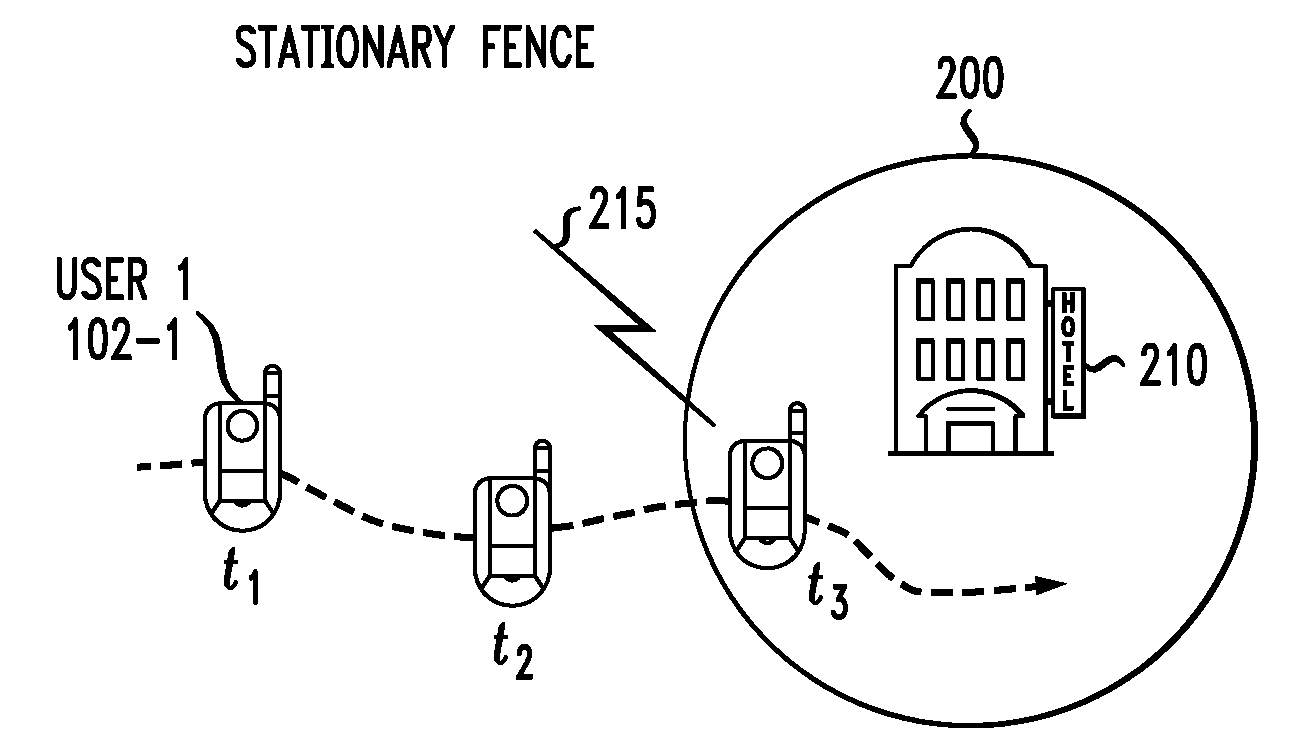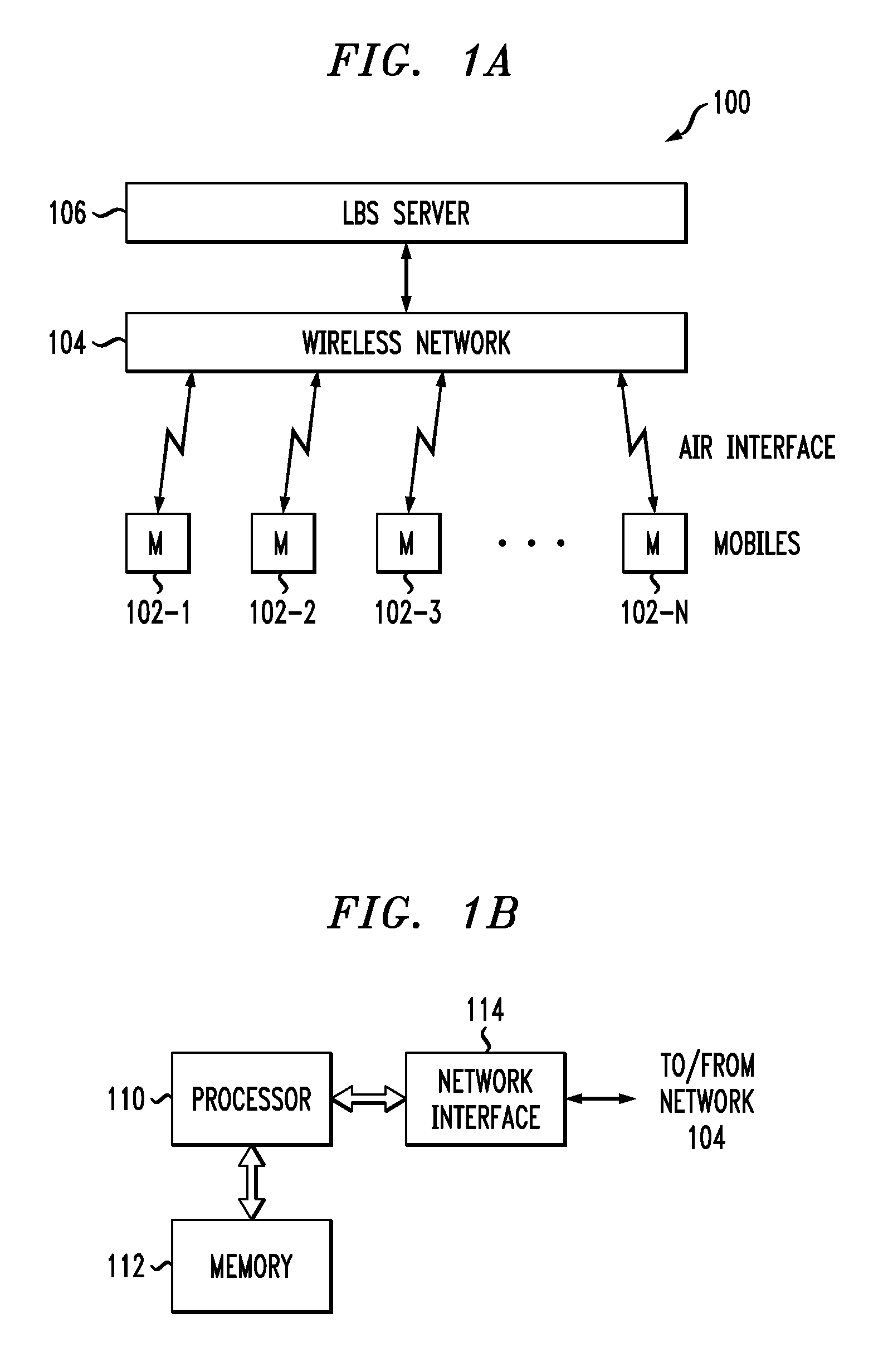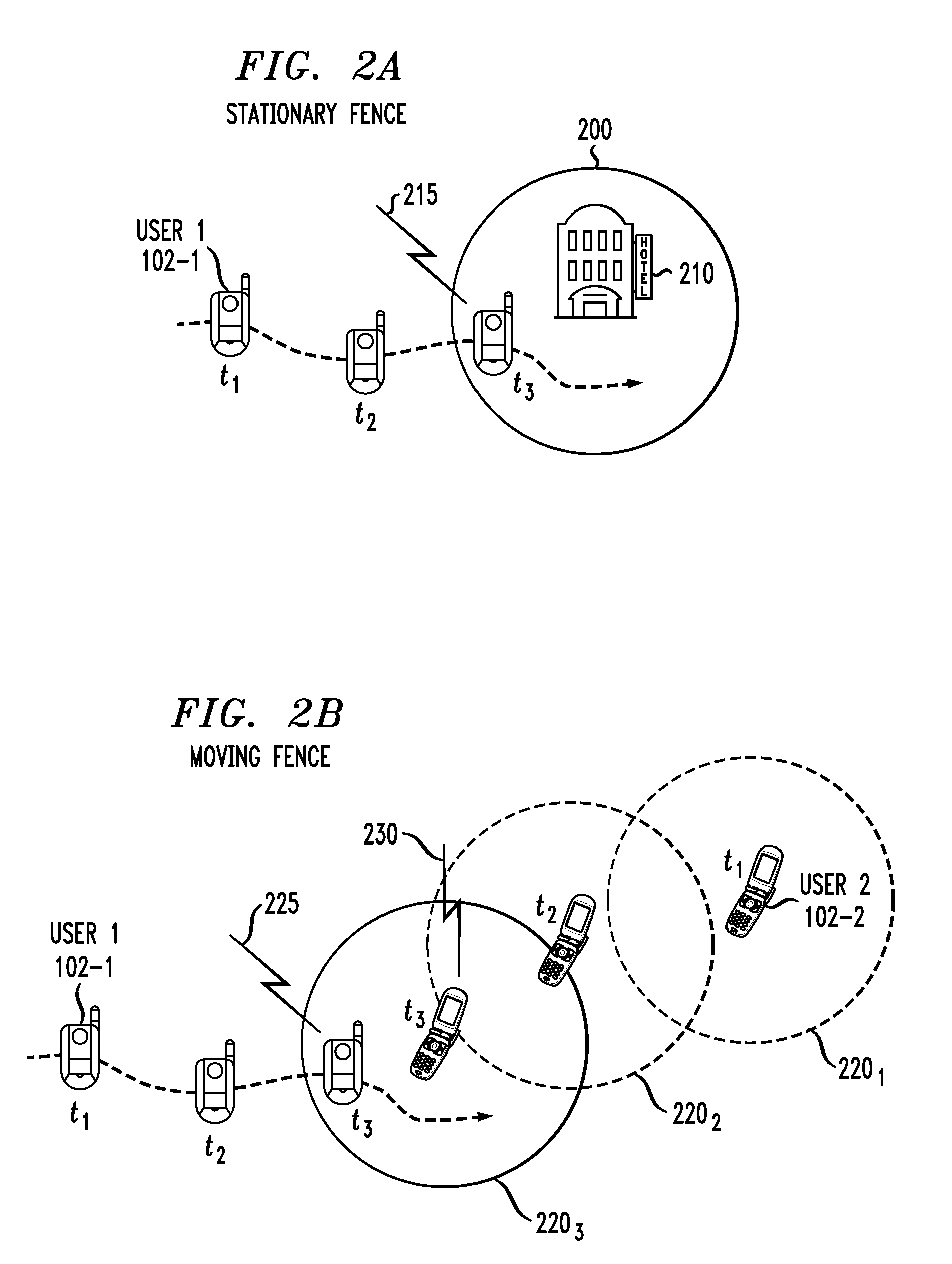Mobile-Server Protocol for Location-Based Services
a mobile server and location-based technology, applied in the field of wireless communication systems, can solve the problems of affecting the ability of the system to support its primary voice and data traffic functionality, affecting the delivery of location-based services, and affecting the performance of the location-based servi
- Summary
- Abstract
- Description
- Claims
- Application Information
AI Technical Summary
Benefits of technology
Problems solved by technology
Method used
Image
Examples
Embodiment Construction
[0023]The present invention will be illustrated below in conjunction with exemplary wireless communication systems and associated location-based services. It should be understood, however, that the invention is not limited to use with any particular type of wireless system or location-based service(s). The disclosed techniques are suitable for use with a wide variety of other systems and in providing numerous alternative services. For example, the described techniques are applicable to many different types of wireless networks, including those utilizing well-known standards such as UMTS, W-CDMA, CDMA2000, HSDPA, Long-Term Evolution (LTE), IEEE 802.11 (Wi-Fi), IEEE 802.16 (WiMax), etc.
[0024]The term “wireless communication system” as used herein is intended to include these and other types of wireless networks, as well as sub-networks or other portions of such networks and combinations of multiple networks operating in accordance with potentially different standards. A given wireless...
PUM
 Login to View More
Login to View More Abstract
Description
Claims
Application Information
 Login to View More
Login to View More - R&D
- Intellectual Property
- Life Sciences
- Materials
- Tech Scout
- Unparalleled Data Quality
- Higher Quality Content
- 60% Fewer Hallucinations
Browse by: Latest US Patents, China's latest patents, Technical Efficacy Thesaurus, Application Domain, Technology Topic, Popular Technical Reports.
© 2025 PatSnap. All rights reserved.Legal|Privacy policy|Modern Slavery Act Transparency Statement|Sitemap|About US| Contact US: help@patsnap.com



